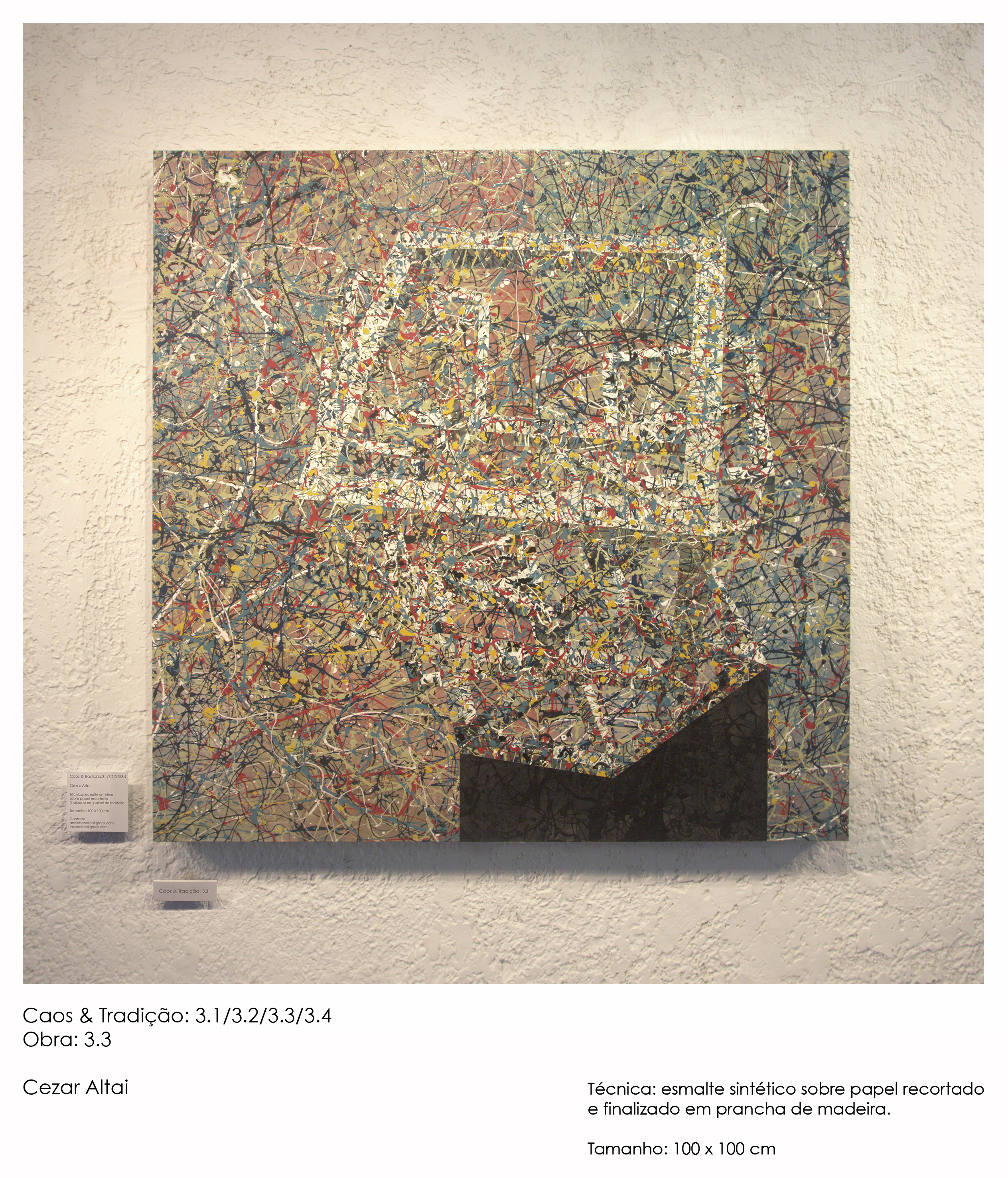CHAOS & TRADITION
(…) Studying the “non-linear dynamic systems” while trying to establish his principles of logic, it did not take long until Edward Lorenz, the creator of the “Theory of Chaos” and/or his disciples, noticed the valuable qualities in the heterodox temperament of the abstract expressionism for the then new scientific field of chaos. For the theoreticians of chaos, the genre of painting which tempted to abolish the mediation of consciousness in order to emphasize the art-nature connection (genre that traces its foundations back to the dripping of Max Ernst and Jackson Pollock, the artist who made his paintings soar at the last consequence) succeeded as mimesis of “natur”. Without considering whether such a success was to be verifiable by science or by any theorists other than artistic, or even, it was a mimesis or a simulacrum, I believe that the merit of the later artists was to have revised, with an unprecedented impetus, the chaos underlying the order, thus maintaining the flame of the fecund mystery surrounding us in the state of “natural world”. Nevertheless, it’s possible to affirm that Ernst and Pollock’s performances, although successful, were destined to be an imitation and never nature themselves, because, while culturally immersed under the noise of the fact that throughout all the history of the “Natur” accessible to human, there was and still is no news about the existence of something similar to a steal cube. Being so, any human action seems to be predestined to handle the proper nature (which is why I wrote: simulacrum), while dealing with the ghosts of memory. Observing the still fertile Expressionist presence within all the genres, among the dilettante urban manifestations and revolutionary ideologists, I see myself less as an artist and more like a craftsman who, working in the rift between chaos and tradition, manages constructs, ethereal noises, geometrical phantoms and paints to be in front of what was behind of the barricade of thought.
Cezar Altai
CAOS & TRADIÇÃO
(…) Estudando “sistemas dinâmicos não lineares”, na tentativa de estabelecer seus princípios lógicos, não tardou para que Edward Lorenz, o criador da “Teoria do Caos”, e/ou seus discípulos, vissem no temperamento heterodoxo do expressionismo abstrato qualidades caras para o então novo campo de estudos científicos. Para os teóricos do caos, aquele gênero de pintura, que visava abolir a mediação da consciência a fim de enfatizar a ligação arte-natureza (gênero que tem no “dripping” de Max Ernst a sua fundação, e em Jackson Pollock o artista que leva a pintura planar às últimas consequências) lograva êxito como mimese de “natur”. Sem levar em consideração se pretendiam tal êxito aferível pela ciência ou entre teóricos outros que não os da arte, ou, ainda, se era mimese ou simulacro, acredito que o mérito daqueles artistas foi ter revisitado com ímpeto inédito o caos subjacente à ordem, mantendo, deste modo, acesa a chama do fecundo mistério que nos rodeia em estado de “mundo natural”. No entanto, é possível afirmar que o empreendimento de Ernst e Pollock, ainda que bem sucedido, estava fadado a ser imitação e nunca natureza mesma, pois, imerso culturalmente no ruído do fato de que em toda a história da “Natur” à qual tem acesso o homem, não havia e não há notícia de que fora do horizonte da razão exista algo como um cubo de aço, qualquer ação humana parece estar predestinada a tratar com sua própria natureza (por isto escrevi: simulacro) e haver-se sempre com os fantasmas da memória. Observando a ainda fértil produção expressionista de todos os gêneros, entre diletantes manifestações urbanas e ideólogos revolucionários, me vejo menos como um artista e mais como um artesão que, trabalhando na frincha entre o caos e a tradição, gerencia constructos, ruídos etéreos, fantasmas geométricos e pinta para estar de frente com o que estava atrás da parede do pensamento.
Cezar Altai
ON THE KINETIC CHARACTER OF
THE C&T PAINTINGS
DO CARÁTER CINÉTICO DAS
PINTURAS C&T








































